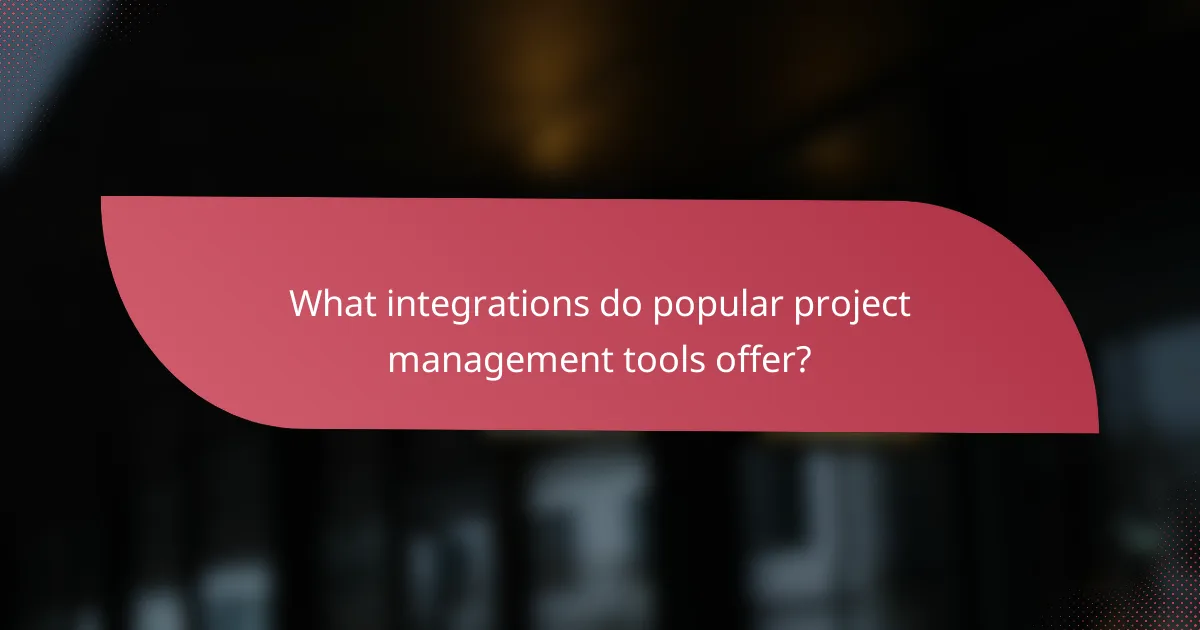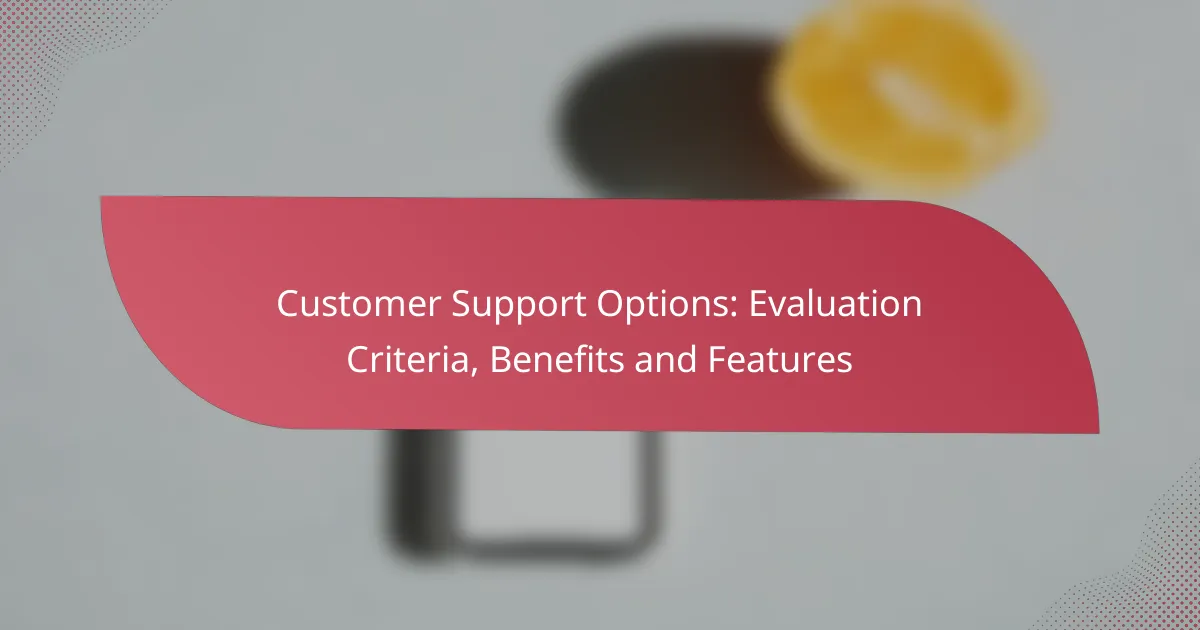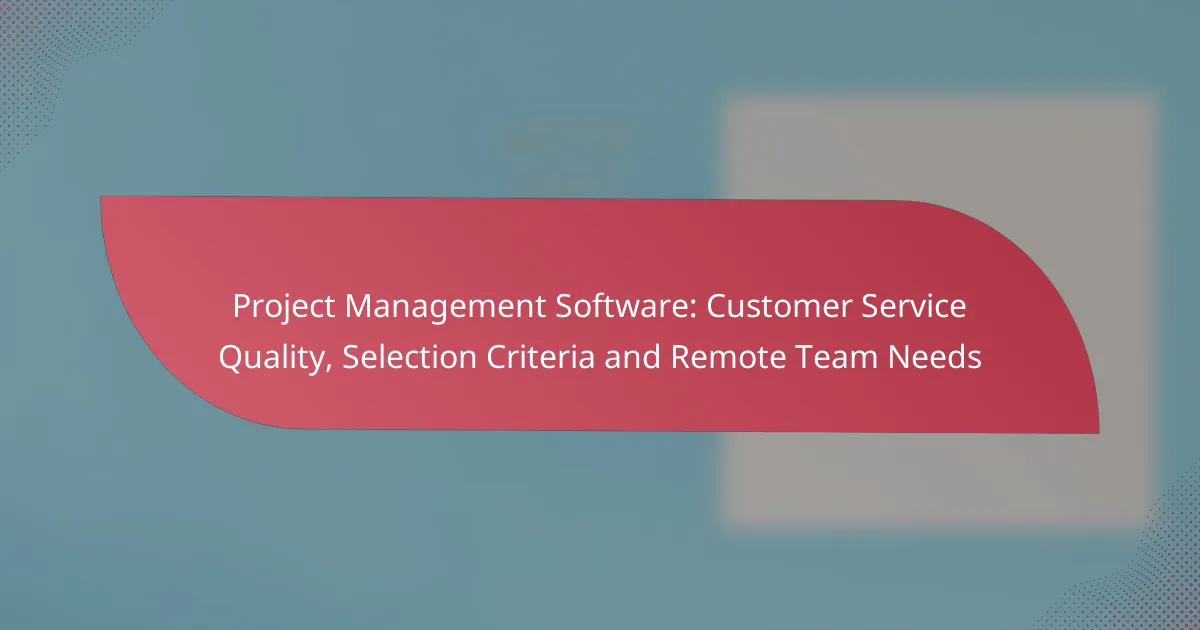Effective project management tools are essential for teams seeking 24/7 support, scalability, and seamless integration. These tools not only provide round-the-clock assistance but also adapt to the growing complexities of projects and team dynamics. With flexible pricing models and customizable workflows, they ensure that organizations can efficiently manage tasks while enhancing collaboration through various integrations.

What are the best project management tools with 24/7 support?
The best project management tools with 24/7 support offer continuous assistance to ensure teams can resolve issues and maintain productivity at any time. These tools not only provide reliable support but also feature scalability and integration capabilities to adapt to various project needs.
Asana
Asana is a popular project management tool known for its user-friendly interface and robust features. It offers 24/7 support through various channels, including chat and email, ensuring that users can get help whenever they need it. Asana’s scalability allows teams of all sizes to manage projects effectively, from small tasks to large initiatives.
When using Asana, consider leveraging its templates for common project types to save time. Additionally, its integration with tools like Slack and Google Drive enhances collaboration and streamlines workflows.
Monday.com
Monday.com provides a highly customizable project management platform with 24/7 customer support. This tool is designed for scalability, making it suitable for businesses ranging from startups to large enterprises. Users can easily adapt their boards to fit different project requirements and team structures.
To maximize Monday.com’s potential, utilize its automation features to reduce repetitive tasks. Be mindful of the learning curve for new users, as the extensive customization options may require some time to master.
Trello
Trello is a visual project management tool that offers 24/7 support to its users. Its card-based system allows teams to organize tasks intuitively, making it easy to track progress. Trello is particularly effective for smaller teams or projects that require flexibility and quick adjustments.
For effective use of Trello, consider using Power-Ups to enhance functionality, such as integrating with other applications like Google Calendar. Keep in mind that while Trello is great for simple projects, it may lack advanced features needed for larger, more complex initiatives.
Wrike
Wrike is a comprehensive project management solution that includes 24/7 support, catering to teams that require constant assistance. It is designed for scalability, making it suitable for both small teams and large organizations with complex project needs. Wrike’s features include time tracking, Gantt charts, and reporting tools.
To make the most of Wrike, focus on setting up custom workflows that align with your team’s processes. Be aware of potential costs associated with advanced features, as they may require higher-tier subscriptions.
ClickUp
ClickUp is an all-in-one project management tool that provides 24/7 support, ensuring users can access help whenever necessary. Its scalability makes it a great choice for teams of all sizes, offering a wide range of features from task management to goal tracking. ClickUp’s flexibility allows users to customize their workspace extensively.
To effectively utilize ClickUp, take advantage of its templates and automation features to streamline processes. However, be cautious of overwhelming new users with its extensive capabilities, as it may take time to learn all the functionalities available.

How do project management tools scale with business growth?
Project management tools scale with business growth by offering features that accommodate increasing project complexity and team size. These tools typically provide flexible pricing models, customizable workflows, and integration capabilities that evolve alongside the organization’s needs.
Scalability features of Jira
Jira is designed to support teams of various sizes, from small startups to large enterprises. Its scalability features include customizable dashboards, advanced reporting tools, and the ability to create multiple projects and teams within a single instance. This flexibility allows organizations to adapt their project management processes as they grow.
Additionally, Jira integrates with numerous third-party applications, enhancing its functionality. Teams can leverage plugins for time tracking, resource management, and other essential tasks, making it easier to scale operations without switching platforms.
Basecamp’s adaptability
Basecamp offers a straightforward approach to project management that can easily adapt to changing business needs. Its user-friendly interface allows teams to manage multiple projects simultaneously, making it suitable for both small teams and larger organizations. Basecamp’s flat pricing model also supports scalability, as businesses can add unlimited users without incurring additional costs.
Moreover, Basecamp’s integration capabilities with tools like Slack and Google Drive facilitate seamless collaboration. This adaptability ensures that as teams expand, they can continue to use Basecamp effectively without the need for significant adjustments to their workflows.

What integrations do popular project management tools offer?
Popular project management tools offer a variety of integrations that enhance functionality and streamline workflows. These integrations often connect with communication platforms, automation services, and other productivity tools, allowing teams to collaborate more effectively and manage tasks efficiently.
Slack integration with Asana
The Slack integration with Asana allows users to receive updates and notifications directly within their Slack channels. This connection helps teams stay informed about project progress without switching between applications.
To set up the integration, users can link their Asana account to Slack and choose specific projects or tasks to receive updates on. This setup can significantly reduce response times and improve collaboration among team members.
Zapier connections for Trello
Zapier connections for Trello enable users to automate workflows by linking Trello with various other applications. With Zapier, users can create “Zaps” that trigger actions in Trello based on events in other tools, such as adding new cards when a form is submitted.
For instance, a common use case is connecting Trello with Google Sheets to automatically create a Trello card for each new row added to a spreadsheet. This integration can save time and minimize manual data entry, making project management more efficient.

How to choose a project management tool for remote teams?
Choosing a project management tool for remote teams involves assessing features that enhance collaboration, scalability, and integration capabilities. Focus on tools that facilitate communication, task tracking, and file sharing while ensuring they can adapt to your team’s size and workflow.
Criteria for remote collaboration
When evaluating project management tools for remote collaboration, consider user-friendliness, real-time communication features, and integration with other software. Tools should support video conferencing, chat, and document sharing to keep team members connected regardless of location.
Scalability is crucial; the tool should accommodate your team’s growth without significant changes to the workflow. Look for options that offer tiered pricing plans, allowing you to upgrade as your team expands.
Security and compliance are also essential. Ensure the tool adheres to data protection regulations relevant to your industry, which may include GDPR or HIPAA, depending on your location and sector.
Top tools for remote work
Several project management tools excel in supporting remote teams. Popular options include Trello, Asana, and Monday.com, each offering unique features tailored to different workflows.
Trello is known for its visual Kanban boards, making it easy to track tasks at a glance. Asana provides robust task management capabilities, allowing for detailed project tracking and deadlines. Monday.com offers extensive customization options, making it suitable for various project types.
When selecting a tool, consider starting with free trials to assess which platform best meets your team’s needs. Additionally, look for tools that integrate with other applications you already use, such as Slack or Google Drive, to streamline your processes.

What are the pricing models for project management tools?
Project management tools typically offer various pricing models, including subscription-based plans, free tiers, and pay-as-you-go options. Understanding these models helps businesses choose the right tool based on their budget and needs.
Subscription pricing of Monday.com
Monday.com operates primarily on a subscription pricing model, offering several tiers that cater to different team sizes and feature requirements. Plans generally range from basic to enterprise levels, with monthly costs varying based on the number of users and features included.
For example, the basic plan may start at around $8 per user per month, while more advanced plans can exceed $16 per user per month. Businesses should evaluate their needs carefully to select a plan that balances cost with necessary functionalities.
Free tier options of Trello
Trello provides a free tier that allows users to manage projects with essential features, making it a popular choice for small teams or individual users. This free version includes basic boards, lists, and cards, which are sufficient for simple project tracking.
However, users should be aware that the free tier has limitations, such as restricted integrations and fewer automation capabilities. Upgrading to a paid plan can unlock more advanced features, which may be necessary as project complexity increases.

How do project management tools enhance team productivity?
Project management tools enhance team productivity by streamlining workflows, improving communication, and automating repetitive tasks. These tools allow teams to collaborate effectively, track progress in real-time, and allocate resources efficiently, ultimately leading to faster project completion and higher quality outcomes.
Task automation in ClickUp
ClickUp offers robust task automation features that help teams reduce manual work and increase efficiency. Users can create automated workflows that trigger actions based on specific conditions, such as moving tasks to different statuses or sending notifications when deadlines approach.
For example, a team can set up an automation that assigns new tasks to team members based on their workload or automatically updates task statuses when subtasks are completed. This not only saves time but also minimizes the risk of human error.
Real-time collaboration in Wrike
Wrike facilitates real-time collaboration through its interactive platform, allowing team members to communicate and share updates instantly. Features like live document editing, commenting on tasks, and integrated chat ensure that everyone stays informed and engaged throughout the project lifecycle.
Additionally, Wrike’s dashboards provide visual insights into project progress, enabling teams to identify bottlenecks and adjust plans swiftly. This immediate access to information fosters a proactive approach to problem-solving and enhances overall team synergy.

What are the key features to look for in project management tools?
Key features to consider in project management tools include 24/7 support, scalability, and integration capabilities. These elements ensure that teams can effectively manage projects, adapt to growth, and seamlessly connect with other software solutions.
Customizable dashboards
Customizable dashboards allow users to tailor their project management interface to display the most relevant information. This feature enhances visibility into project status, team performance, and upcoming deadlines, enabling quick decision-making.
When selecting a tool, look for options that let you drag and drop widgets, choose metrics to display, and adjust layouts. For instance, a marketing team might prioritize campaign progress and budget tracking, while a software development team may focus on sprint progress and bug counts.
To maximize the effectiveness of customizable dashboards, regularly update the displayed metrics based on project phases or team feedback. Avoid cluttering the dashboard with unnecessary information, as this can lead to confusion and reduced productivity.


